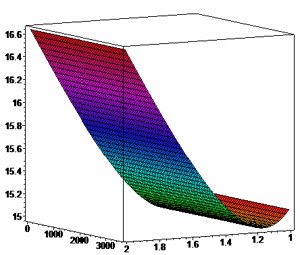Câu chuyện toán học
Cập nhật lúc :4:27 PM, 30/08/2010
The story of Maths - "Câu chuyện toán học" là
bộ phim dài 4 tập của BBC. Phim đưa người xem qua những chặng đường
lịch sử của sự phát triển toán học, từ Ai Cập cổ đại đến châu Âu ngày
nay...
Toán học là nền tảng cơ bản có ở
mọi nơi của mọi thứ diệu kỳ trong cuộc sống hàng ngày, từ những DVD cùng
đầu máy, máy tính mà bạn xem và chia sẻ. Những phần cơ bản của nó đã có
từ hàng ngàn năm trước, khi mà con người còn chưa khám phá những điều
phức tạp như sau này.
Tiến sĩ Marcus du Sautoy - Oxford, một cộng tác viên của BBC, sẽ cho chúng ta hiểu thêm về toán học qua bốn tập phim có tiêu đề là: "Câu chuyện toán học"
Tiến sĩ Marcus du Sautoy - Oxford, một cộng tác viên của BBC, sẽ cho chúng ta hiểu thêm về toán học qua bốn tập phim có tiêu đề là: "Câu chuyện toán học"
 |
| Tiến sĩ Marcus du Sautoy - Oxford một cộng tác viên của BBC trong bộ phim The story of Maths |
Toán học là “ngôn ngữ của vũ trụ”, là thứ ngôn ngữ đặc biệt để giao
tiếp giữa mọi thành phần trong vũ trụ này. Tìm hiểu về nguồn gốc của
toán học, chúng ta bắt đầu từ Ai cập và vùng đất có tên là Mesopotamia –
Lưỡng hà. Người Ai Cập cổ đại định cư trên bờ sông Nile và tin rằng
thần sông, Hapy, gây ra lũ lụt mỗi năm.
Và để đền ơn nguồn nước mang lại sự sống, người dân cúng một phần nông sản như là lễ vật trả ơn. Trong khi dân cư ngày càng tăng, việc cai trị họ trở nên cấp thiết. Diện tích đất cần được tính toán, sản lượng cây trồng cần phải dự báo trước, tính và đối chiếu tiền thuế. Tóm lại, con người cần đo và đếm.
Từ đó các việc giao thương buôn bán đã dần hình thành nên hệ thống toán. Hy Lạp cũng là một trong những nơi bắt đầu của toán học. Ở đó, Euclid đã khai sinh ra hình học, và ông đã viết một trong những quyển sách nổi tiếng, quyển "Những nguyên lý của hình học".
Và để đền ơn nguồn nước mang lại sự sống, người dân cúng một phần nông sản như là lễ vật trả ơn. Trong khi dân cư ngày càng tăng, việc cai trị họ trở nên cấp thiết. Diện tích đất cần được tính toán, sản lượng cây trồng cần phải dự báo trước, tính và đối chiếu tiền thuế. Tóm lại, con người cần đo và đếm.
Từ đó các việc giao thương buôn bán đã dần hình thành nên hệ thống toán. Hy Lạp cũng là một trong những nơi bắt đầu của toán học. Ở đó, Euclid đã khai sinh ra hình học, và ông đã viết một trong những quyển sách nổi tiếng, quyển "Những nguyên lý của hình học".
 |
Ngay sau khi bắt đầu xây dựng, những người Trung Hoa cổ đại nhận ra rằng họ phải tính toán về khoảng cách, góc hình chiếu và số lượng nguyên vật liệu. Do đó không hề ngạc nhiên khi điều này đã truyền cảm hứng cho những nhà toán học xuất sắc để giúp xây dựng đế chế Trung Hoa.
Vào thời Trung Hoa cổ đại, toán học chỉ là một hệ thống các con số đơn giản mà đã đặt nền móng cho cách tính toán của chúng ta ngày nay. Khi một nhà toán học muốn làm một phép tính cộng, ông ấy dùng những que tre nhỏ. Những que tre này được sắp xếp để biểu thị những con số từ 1 đến 9, sau đó chúng được đặt theo cột, mỗi cột biểu thị hàng đơn vị, hàng chục hàng trăm, hàng nghìn, vân vân. Vì vậy số 924 được biểu thị bằng cách đặt số 4 vào cột hàng đơn vị, số 2 vào cột hàng chục và số 9 vào cột hàng trăm. Đó là thứ mà ngày nay chúng ta gọi là hệ thống giá trị thập phân.
 |
Người Ấn Độ có thể đo góc giữa mặt trời và đài quan sát là 1/7 độ. Hàm sin của 1/7 độ cho ta tỉ lệ 400:1. Điều này có nghĩa là mặt trời xa Trái Đất hơn 400 lần so với mặt trăng. Vì vậy khi sử dụng lượng giác, các nhà toán học Ấn Độ có thể khám phá hệ mặt trời mà không cần phải ra khỏi Trái Đất.
Châu Âu thực ra đi sau rất lâu so với châu Á nhưng những gì đạt được sau đó lại trở thành nền lý thuyết tảng cơ bản được sử dụng rộng rãi nhất. Đóng góp lớn nhất của Fermat với toán học là phát minh ra lý thuyết số học hiện đại. Ông để lại một phạm vi rộng những giả định và định lý về số học bao gồm định lý cuối cùng nổi tiểng mang tên ông. Việc chứng minh định lý Ferma đã thách thức các nhà toán học trong hơn 350 năm.
 |
Với các khái niệm kỳ lạ, những câu chuyện xoay quanh cách mà chúng ta giải quyết những vấn đề chỉ ra cho chúng ta thấy toán học là thứ có thể vượt qua những ranh giới về văn hóa và thực sự là ngôn ngữ của cả thế giới này.
-------------------------------------------------------------------------------------------
Toán học thuần túy, theo cách của riêng nó, là thi ca của tư duy logic.
Pure mathematics is, in its way, the poetry of logical ideas.
Albert Einstein .


![[Hình: Khan-Academy.jpg]](http://www.anninhthudo.vn/Uploaded/sonhm/2012_04_15/Khan-Academy.jpg)


 ( fig 1. ) The differential equation of this model is given in the form
( fig 1. ) The differential equation of this model is given in the form 
















